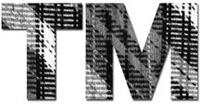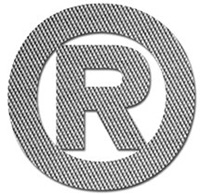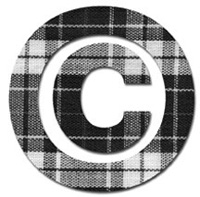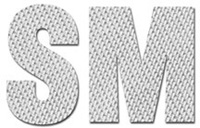|
In business, name recognition is everything. Companies that manufacture a product or provide a service are constantly seeking a “catchy name” or “hook” that will allow potential customers to immediately link their products or services to their company. Often, these identifications become nationally recognized “icons.” 3M has product names like Scotchlite, Dacron, and Thinsulate just to name a few. This primer will serve as an introduction to the world of Intellectual Property and how it can work for your business.
A trademark may be a word, name, symbol, design or any combination thereof, used to identify and distinguish the goods of a party from those manufactured or sold by others and to indicate the source of the goods. A trademark is used on the goods, or containers or labels for the goods. A “brand name” (ex., Polo Ralph Lauren for a shirt) is the marketing term corresponding to the legal term “trademark.” Functional clothing features, like armpit zippers, do not qualify for trademark protection, but arbitrary features that can serve as indicators of source may qualify for trademark protection. Tommy Hilfiger obtained a federal trademark registration for green stitching on the top button-hole of a shirt. On the other hand, the Supreme Court recently decided that patchwork appliques on children’s clothes do not enjoy trademark status, because they are ornamental.
A service mark may be a word, name, symbol, design or any combination thereof, used in the sale or advertising of services to identify and distinguish the services of others and to indicate the source of the services (ex., The Four Seasons for restaurant services). Service marks generally appear in advertisements and promotional material and on signs and letterheads in logo form.
A “trade name” or “commercial name” is the name used to identify the business or a party. An example of this would be “Bacardi,” the shorthand reference to identify Bacardi & Company Limited, the owner of the internationally well-known trademark Bacardi for rum.
In the United States, trademark rights are acquired from either 1) actual use of the mark, or 2) a bona fide intention to use the mark, together with filing an application to register the trademark on that basis in the U.S. Patent and Trademark Office. “Common law” rights under State law exist solely as a result of use without any registration necessary. To obtain a Federal registration, an application may be filed based on:
1) use, or
2) a bona fide intention to use the mark in commerce regulated by Congress, which could be used either in interstate commerce or in commerce between the United States and a foreign country. Purely intrastate commerce (within a single state) does not qualify for Federal registration.
After a mark is selected by a client and submitted to attorneys for clearance, they generally conduct a trademark search to determine the availability of the mark for use and registration in the United States. It is essential that the exact goods of interest are specified because there is an international classification of goods which provides the framework for the search. Once the mark has been cleared for use in the United States, use may commence and the letters “TM” or “SM” may be used in association with the trademark or service mark, followed by the generic name of the particular goods or a description of the services (ex., Dakon cameras, Wurst HutSM restaurants). These abbreviations have no legal status; they just serve as warnings to competitors of your claim of rights in the mark.
After an application is filed in the U.S. Trademark Office, examination of the mark is made by an examining attorney to determine if there is any prior registered mark or other basis for objecting to the application. If the Trademark Office determines that there are procedural informalities in the application or refuses registration for substantive reasons, an “official action” will be issued setting forth the informalities or the reasons for the refusal to register. Informalities in the application usually can be corrected over the telephone; refusals to register for substantive reasons usually require the submission of written arguments in an attempt to overcome the refusal.
After a trademark passes the examination procedure in the Patent and Trademark Office, the trademark proceeds to publication in the Official Gazette. An interested party is given 30 days to file an opposition against the published mark if the party believes it has prior rights and may be damaged by the granting of registration.
In the case of intent to use applications, use must be made before a registration will be issued. After use commences, the applicant must file a Statement of Use or an Amendment to Allege Use setting forth the dates of first use in commerce.
Once a trademark is registered in the U.S. Patent and Trademark Office, the statutory registration symbol may be used. Use of the symbol is not mandatory, but it carries useful benefits such as the right to recover profits or money damages in an infringement suit.
The term of a trademark registration in the United States is 10 years; however, to maintain the registration, a Declaration of Use must be filed during the sixth year of the registration stating that the mark is in bona fide use in commerce in the ordinary course of business and not merely to reserve a right in the mark. As long as the trademark is in use, renewals of the registration may be made for additional periods of 10 years. The Trademark Law provides that nonuse of a mark for three consecutive years is prima facie evidence of abandonment.
It is an infringement for someone else to use the same or a confusingly similar term on the same or related goods or services, in the same geographical area or, in some cases, within a natural area of geographic expansion.
Differences in national trademark laws
In the United States, United Kingdom and countries following British law practice, registration of trademarks may be acquired by use or intention to use. On the other hand, in many of the Civil Law countries (such as Germany, Japan and Spain), the first applicant to file a trademark or service mark is generally entitled to registration and exclusive use of the mark. Therefore, if foreign trademark protection is important, applications to register abroad should be filed without delay. In Mexico, for example, a pirate registered the Jordache trademark before its American owner did, which required extensive legal proceedings to get back the Mexican rights.
Copyright protects an original expression of an idea, not the idea itself. Others may exploit the idea so long as they do not copy someone else’s protected expression of it. Original works of authorship fixed in a tangible medium of expression from which they can be communicated are subject to copyright protection. Copyright protection does not extend to an idea, procedure, process, method of operation, concept, principle or discovery, regardless of the form in which it is embodied. Copyrightable works include such things as literary, musical and dramatic works, pictorial, graphic and sculptural works, computer programs and compilations of works and derivative works. Even labels and advertisements may be copyrighted. Functional clothing styles and patterns may not be copyrighted, but ornamental designs applied to fabric, such as original floral designs, can be and often are copyrighted.
The owner has the exclusive right to reproduce the work, to distribute the reproductions, to display and perform the work publicly and to authorize others to do any of these things.
The moment one has created and fixed a copyrightable work in a tangible form, such as writing it down or recording it on tape, it automatically enjoys federal copyright protection, whether or not it has been published.
Copyright notice is not required for unpublished works. As for published works, notice is not mandatory; however, it is always desirable to place a copyright notice on the work since an innocent infringer, relying on the absence of notice, may not be liable for actual or statutory damages before receiving actual notice of the copyright. The copyright notice consists of the following three elements:
1) symbol or the word “Copyright” or the abbreviation “Copr.”;
2) the year of first publication; and
3) the name of the owner of copyright or a recognizable abbreviation thereof. For example: 2001 XYZ Manufacturing Inc.
Copyright in a work can be registered (in published or unpublished form) by depositing in the Copyright Office two complete copies of the best edition of the work together with an application and a $30 fee. Although registration is not mandatory, it is necessary to institute an infringement action. Because statutory damages and attorneys’ fees are awarded only to owners of registered works if they are:
1) unpublished or
2) published and registered within three months after the first publication, there is a strong incentive to register.
The general rule is that copyright lasts for the author’s lifetime plus 70 years after the author’s death. In the case of a “work made for hire” for a company, the copyright lasts for 75 years from publication or 100 years from creation, whichever is shorter.
The individual or joint authors of a work initially own the copyright, but the employer or party commissioning a work automatically is deemed to be the “author” of a “work made for hire” if either:
1) the work was prepared by an employee within the scope of employment or
2) the work was specifically ordered or commissioned and most importantly was expressly agreed to be a “work made for hire” in a written instrument signed by both parties and the hiring party controlled the manner and means by which the work was accomplished.
Many people overlook the importance of routinely getting assignments of copyright from advertising agencies and label designers to secure copyright in their creative work and prevent its copying by the competition.
Copyright infringement is the unauthorized use or copying of a copyrighted work. To prove infringement, the copyright owner must show:
1) “access” to the copyrighted work and
2) that the two works have “substantial similarity” from the viewpoint of an ordinary observer.
The independent creation of an identical work without copying, the use of the basic idea expressed in the work, and “fair use” of the work for purposes of criticism, comment, news reporting, teaching, scholarship or research are not considered copyright infringement.
Because the penalties for copyright infringement can be severe including injunctions, awards of profits and damages, attorneys’ fees, and “statutory damages” of up to $300,000 per infringement it is important to make sure that any designs used in clothing manufacture are free from infringement risk. If a uniform is made with imported fabric imprinted with a decorative pattern copyrighted in the U.S., the entire shipment of finished goods may be seized by the U.S. copyright owner and destroyed.
Mr. Kunstadt is the managing attorney of R. Kunstadt, P.C., an intellectual property law firm in New York, N.Y. Mr. Jackson is Director of Communication for the National Association of Uniform Manufacturers and Distributors (NAUMD).
|














